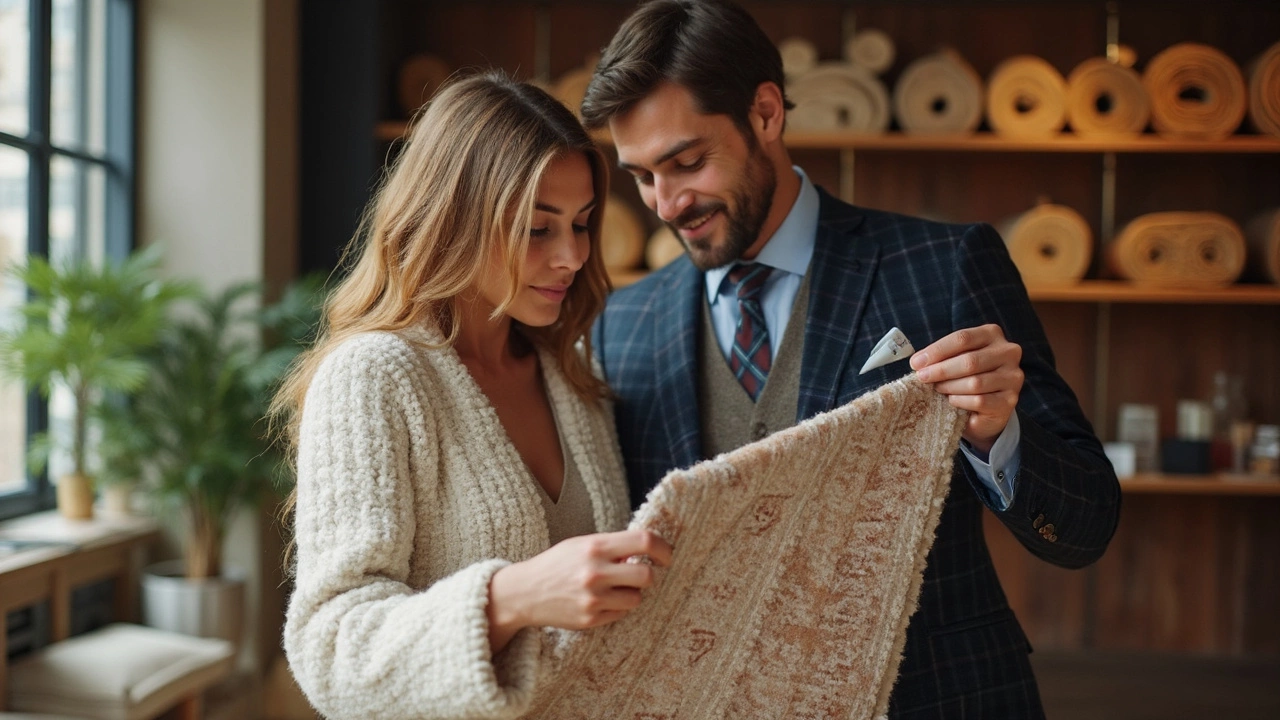Expensive Rugs – What Makes Them Worth the Cost?
If you’ve ever walked into a showroom and seen a rug with a price tag that makes you blink, you probably wondered if it’s just a fancy label or if there’s real value behind it. The short answer: good reason. Quality, durability, and design all play a part, and the right rug can actually save you money in the long run.
First thing to get straight – an expensive rug isn’t just a larger piece of cloth. It’s usually made from premium fibers like hand‑knotted wool, silk, or a blend that’s been sourced responsibly. Those fibers are naturally tougher than cheap synthetics, so they resist wear, stains, and fading better.
Materials and Craftsmanship
Hand‑knotted rugs are the gold standard. Each knot is tied by hand, which means the maker can control tension and pattern detail. The more knots per square inch, the sharper the design and the stronger the rug. Silk adds a luminous sheen and feels super soft, but it also needs more care – something you’ll know before you buy.
Eco‑friendly brands often use wool that’s been treated with natural dyes instead of harsh chemicals. That not only makes the rug safer for your home’s air quality, it also means the colors stay vivid for years. When you compare a cheap polyester rug that fades after a few washes to a hand‑knotted wool piece, the difference is clear.
Buying and Caring Tips
Here’s a quick checklist for picking a pricey rug that actually pays off:
- Check the knot count – over 200 knots per square inch is a good benchmark for quality.
- Feel the backing. A tight, even backing signals solid construction.
- Ask for the origin story. Rugs made in traditional weaving regions (like Persia or Kashmir) usually carry a heritage of skill.
- Look for a clear return or warranty policy. Reputable sellers stand behind their products.
Once you bring the rug home, treat it right. Vacuum it gently on a low setting, rotate it every few months, and spot‑clean with a mild cleaner. If you have kids or pets, consider a protective rug pad – it adds cushion and shields the fibers from foot traffic.
Remember, placement matters. A high‑traffic hallway can wear down a delicate silk rug faster than a living‑room rug that’s mostly decorative. If you’re unsure, ask the retailer which rooms the rug is best suited for.
Finally, think about resale. A well‑maintained hand‑knotted rug can keep a large portion of its value, especially if it’s from a recognized maker. That’s why many designers view an expensive rug as an investment piece rather than a throw‑away purchase.
Bottom line: not every pricey rug is a masterpiece, but the ones that are worth the splurge bring durability, beauty, and even a touch of heritage to your home. Use the checklist, care for it properly, and you’ll get years of enjoyment – and maybe a good resale price down the road.
-

How to Spot an Expensive Rug: Quick Tells for Every Shopper
Ever walked into a store and wondered if that stunning rug is actually worth its price tag? This article breaks down the clearest signs that a rug is genuinely high-end. You'll learn what materials, weaving techniques, and design details set luxury rugs apart from the mass-produced kinds. We'll also touch on expert tricks like checking the back of the rug and feeling the fibers. Get ready to spot a true investment piece, even if you’re totally new to rug shopping.
